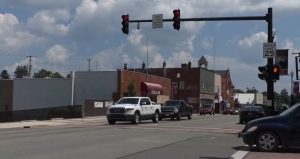Appalachian counties have plans to use American Rescue Plan funding but still face project obstacles
By: Claire Schiopota
Posted on:
ATHENS, Ohio (WOUB) – A historic amount of money is being invested into Ohio’s Appalachian counties and officials are in the throes of deciding how to spend the money while also avoiding any application or project obstacles.
Sam Miller, development director at Buckeye Hills Regional Council, said this is an opportunity for Appalachia to restore communities for future generations.
“This is really our once in a generation opportunity to revitalize these places that have intense, incredible histories and bring them back to where they were,” Miller said.
The money is coming from the American Rescue Plan Act signed by President Joe Biden last year. Ohio Gov. Mike DeWine has designated $500 million of the state’s portion for the 32 Appalachian counties. The funding is to fall under three pillars: downtown revitalization, workforce and healthcare.
For Washington County, this funding means finding ways to invest into historic preservation. Jesse Roush, executive director of the Southeast Ohio Port Authority, said following codes in renovating these buildings can get expensive.
“Maintaining historical relevance, being accessible to the general public, keeping it in a comfortable climate … those things are very expensive,” Roush said.
Perry County is looking into a Builder’s Club where they can teach residents skills and develop their workforce, especially with STEM topics. Maggie Kaniecki, intern for Mayor Thomas Johnson in Somerset, said the county also plans to invest in historic buildings, build community bike paths and renovate the food bank.

“Giving residents an opportunity that sometimes we’ve missed out on,” Davis said.
Sam Brady, president and CEO at Jackson County Economic Development, said he’s confident in the county’s progress on downtown revitalization by their own means, but he thinks this funding can help them continue to build and renovate.
But concerns from these county officials have also taken root as communities begin applying for the grant money.
Specifics on the timeline for the grant application process and what guidelines communities must follow are not clear yet. Ohio’s Department of Development and the Appalachian Regional Commission have not responded to WOUB’s requests for clarification.
With the vague guidelines provided to communities for funding projects, some communities are able to use that to their benefit, shaping their application to fit their needs. On the other hand, officials can see townships becoming confused by the vagueness.
“For us, it’s a good thing,” Keniecki said. “I think for communities who don’t know where to start, it’s bad.”
Housing poses a huge issue, but the issue is not specifically addressed under the three pillars.
“Most folks are looking at ways to make money from the tourism industry,” Davis said, “rather than building a subdevelopment or subdivision so that there’s housing available at a reasonable price, a market rate price for a young family to move into and have a nice job here.”
Finding developers to build these projects is also concerning. Roush said developers often don’t want to work with the government due to how long it takes and the amount of paperwork associated with it.
Additionally, the potential for Intel, a multinational technology company, coming to Columbus leaves Appalachia competing for developers.
Miller from Buckeye Hills said communities approved for funding will receive it by 2024 and the projects are to be completed by 2026.
“If they want us to spend half a billion dollars during the next three to five years that Intel is being developed, at least around here, I believe it’s going to be a problem,” said David Hansen, director of the Perry County Community Improvement Corp.
Counties are leaning back on county collaboration to confront these issues. Even though townships will have to apply separately, Appalachian communities are hoping to use one another as resources throughout the application process. During her 15 years in Hocking County, Davis said, this is the first time synergies have connected.
“Everybody was coming up with essentially the same things that need to be addressed,” Davis said. “There’s this cohesiveness, instead of everybody trying to operate in silos, separately from each other.”
As Appalachian townships work on their grant applications, hopes are high for creating generational, transformative change.
“This $500 million will not fix Appalachia’s problems,” Brady said. “But it will be a great drop in the bucket towards that.”

